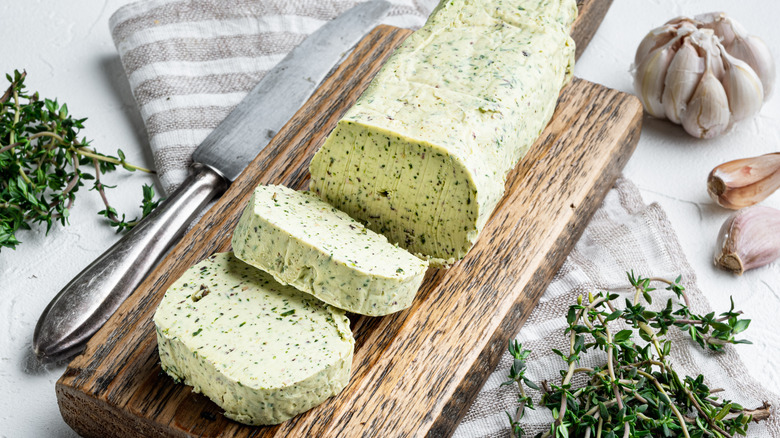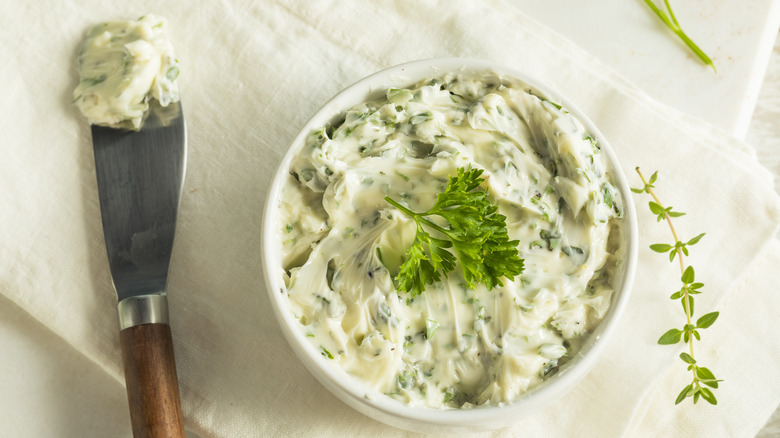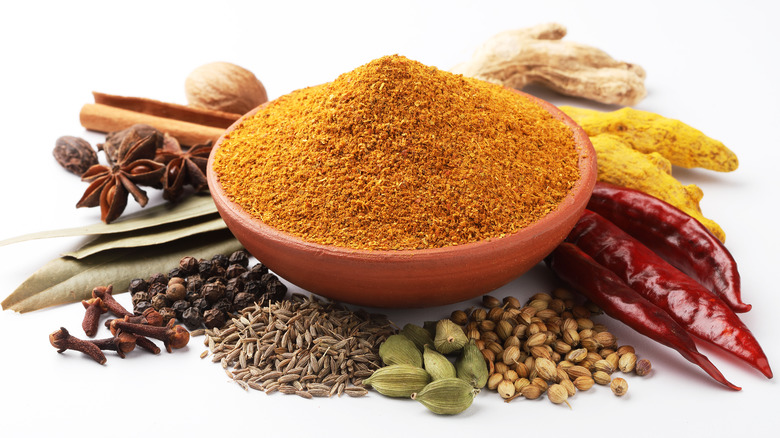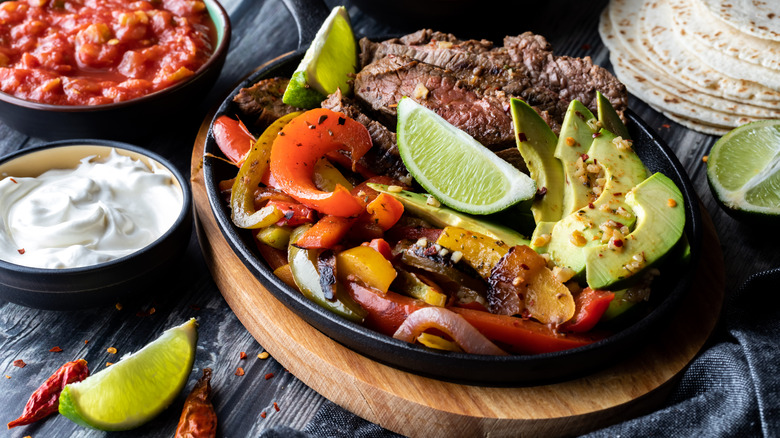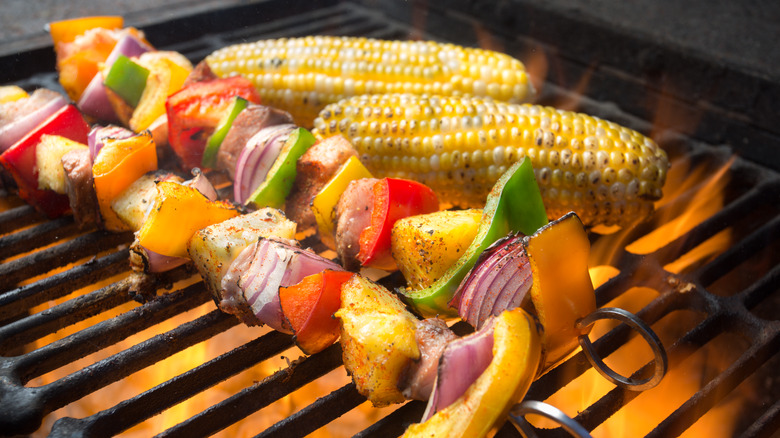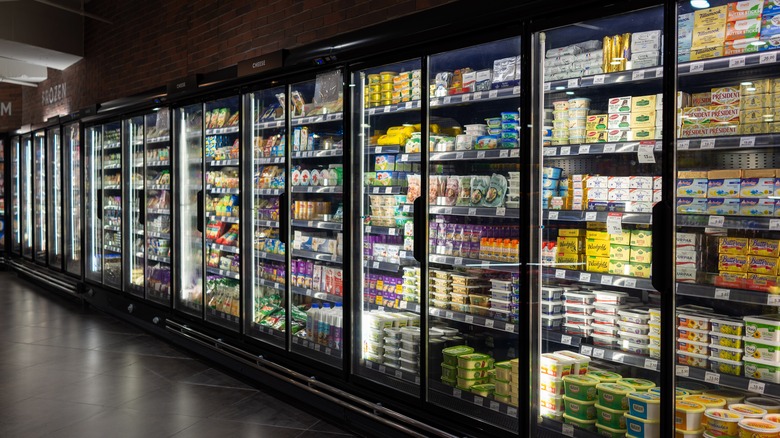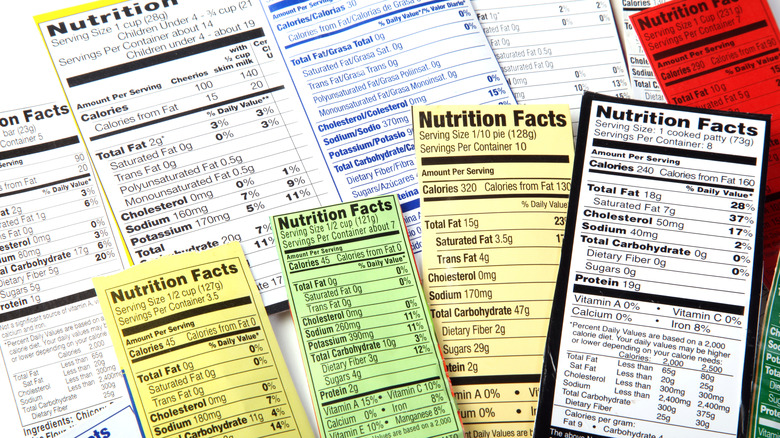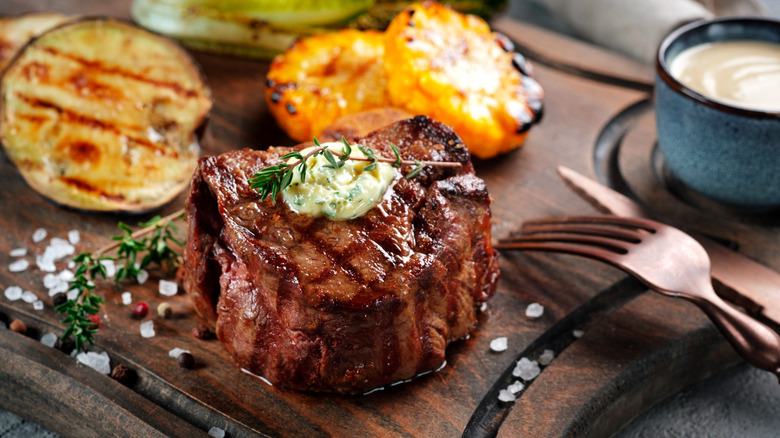What Is Southwest Butter And What Can You Do With It?
On more than one occasion, when I've found myself looking for the perfect finishing touch on a dish, southwest butter has saved the day. I tend to almost always have most of the ingredients on hand, and it really doesn't take much time to whip it up. Southwest butter's delicious payoff is totally worth the minimal effort that making it requires.
It's no secret that I dig a little heat in my food. Ask any of my friends and family or the chefs I've worked with, and they'll be the first to tell you about my hot sauce ventures. Like a splash of hot sauce, a dab of southwest butter is a tasty way to add some quick flavor and a little spice. So it should come as no surprise that I'm happy to sing its praises.
Because southwest butter can be endlessly customized and used on so many different dishes, it's a great trick to keep up your sleeve. If you've ever felt like your food needed a little extra something to kick it up a notch, there's a good chance that southwest butter is the answer you've been looking for. Read on to learn more about the amazingly delicious spread and how it can take your cooking to the next level.
What is southwest butter?
Southwest butter is essentially a type of compound butter. For the uninitiated, compound butter is basically just flavored butter that's mixed with various herbs and spices. As its name suggests, southwest butter is butter that captures the flavors that we typically associate with cuisine in the southwestern US. Cumin, cayenne pepper, smoked paprika, lime, minced chili peppers, and herbs like cilantro, thyme, and oregano are often in the mix.
Once southwest butter is mixed together, it's used as a flavor enhancer. Think of it as an ingredient that can be used during the cooking process, or as a topping that can be added towards the end of cooking. Southwest butter would be equally at home being used to saute shrimp for tacos, inside of a baked potato, or dolloped onto a glistening steak fresh off the grill. If you're a fan of flavorful butters, then you're bound to be a fan of southwest butter.
How is it made?
If you're new to the world of southwest butter, the good news is that making it is very easy, even for cooks who don't have much experience in the kitchen. The first step to making southwest butter is bringing some plain unsalted butter to room temperature. When the butter is room temperature, it's much easier to stir in other ingredients like herbs and spices. Note that the butter shouldn't be melted or liquified; it should simply be creamy and easily spreadable. The reason it's best to use unsalted butter is so that the butter can be seasoned to taste.
Once the butter is at room temperature, the herbs and seasonings are mixed in. The herbs and seasonings may be fresh or dried. It's a good idea to have a seasoning blend mixed and ready. Southwest butter is usually made with a blend of spices that includes salt, pepper, chili powder, cumin, garlic powder, smoked paprika, and cayenne pepper. When it comes to herbs and veggies, minced garlic, diced chili peppers, lime, oregano, and cilantro may be added. It's important to taste the butter as you go, aiming for your personal preferences. Gently stir everything together and make sure that the spices and herbs are well incorporated throughout the butter.
What does southwest butter taste like?
Southwest butter has a smoky and savory flavor with a hint of heat and often a touch of fresh citrus. At the same time, the bold seasonings are mellowed out by the creaminess of the butter. Because ingredients like chili powder, cumin, and lime are used, the easiest thing to compare the taste to is tacos or fajitas.
Keep in mind that the taste of southwest butter can vary depending on the recipe. Of course, how long the flavor lingers also depends on how much butter is used. Some might be spicier if the recipe uses more chili flakes. Others might have a smokier taste, if more cumin or smoked paprika is used. But there is definitely a commonality between all southwest butters that captures the deliciousness of the regional cuisine that inspires it. In essence, the taste of southwest butter is the distinctive flavor of the southwest itself, but in the form of a creamy spread.
How to cook with southwest butter
Southwest butter is a great way to prepare grilled corn — especially if it's for elotes (Mexican street corn). Elotes is just grilled corn that's slathered in a spicy and creamy sauce that's seasoned with lime juice and Cotija cheese. Southwest butter is a great way to prepare grilled corn for elotes, because the seasonings in southwest butter perfectly complement the sauce that goes on the corn after grilling.
Southwest butter is also excellent on grilled steak. After the steak has been cooked to your liking, add a scoop of southwest butter on top while the steak is resting. The residual heat from the freshly grilled beef should be enough to melt the southwest butter, sending it drizzling down the sides of the steak. Southwest butter is also an easy way to jazz up some rice — simply stir it in to taste after it's cooked and add a punch of flavor. The beauty of southwest butter is that it's highly versatile, so let your imagination run wild.
Where to buy southwest butter
Due to a lack of pre-made southwest butter at the grocery store, the easiest way to score some southwest butter is by making it yourself. The good news is that southwest butter is easy to make and the ingredients are also easy to find. Head to the dairy aisle of a grocery store and pick out your favorite brand of butter. It may be easier to pick out a container of butter that's already been whipped, since whipped butter is airy and easier to mix with other ingredients.
The rest of the ingredients can be found in the spice aisle and the produce section. Spice-wise, at a bare minimum, you'll need salt, pepper, cumin, chili powder, and red pepper flakes. When it comes to herbs, you'll need oregano and cilantro. To get more bang for your buck, dried herbs are the best bet. At the same time, fresh herbs have a scent and flavor vibrancy that's often far superior to dried herbs.
The brand BetterButter sells what it calls Steakhouse Butter, which is somewhat similar to southwest butter. BetterButter's Steakhouse Butter is made with ingredients like roasted red pepper puree, dried tomato, and onion powder. This isn't quite the same as southwest butter, but it could be used as a butter base from which you could mix in additional spices and herbs.
Nutritional information about southwest butter
Butter is a high-calorie ingredient that's full of fat. The fat content of southwest butter will be dependent on the type of butter that's used. The easiest way to figure out how much fat is in your southwest butter is by consulting the butter's nutritional label.
In general, a single tablespoon of butter has around 11 grams of fat and about 100 calories. Of course, there are several types of butter on the market, so these numbers may vary between brands. There are some types of butter that cut back a little on the calories and fat, which may be a slightly healthier option. Let's be real, though. At the end of the day, this is butter we're talking about. There's no getting around the fact that butter is rich, fatty, and high in calories. And considering that butter is obviously the primary ingredient here, it's fair to say that southwest butter isn't exactly the healthiest spread imaginable. At the same time, it's absolutely delicious and worth keeping on hand.
Varieties of southwest butter
Southwest butter can feature different flavors depending on its ingredients. Those who appreciate a little extra heat would probably enjoy spicy varieties that include some extra cayenne pepper, chili flakes, or diced jalapenos. Even just the type of pepper used — whether fresh or roasted —- can make a huge difference in flavor. Habaneros will contribute more heat but also infuse their floral spiciness into the butter for especially delicious results. Roasted poblanos are another tasty addition to southwest butter. They have a distinctive smoky flavor that's only moderate spicy, making it quite accessible heatwise.
Some southwest butters have a smokier flavor profile, usually due to the use of smoked paprika or chipotle powder. Others may be more herbaceous or citrusy. The truth is that there are a lot of varieties of southwest butter, which is part of its appeal.
How to store southwest butter
There are a couple of different ways to store southwest butter. One way would be to scoop it into an air-tight container and then put it in the refrigerator. When you'd like to use some, just simply spoon out what you need and then put the container back into the fridge to keep it fresh.
Another way to store southwest butter is with plastic wrap in the fridge. After making the southwest butter, scoop it out of your mixing bowl and pile it on a long piece of plastic wrap. Then fold the plastic wrap over the butter and roll it into a log. Twist the ends of the plastic wrap and make sure it's tight, then refrigerate it. You may also want to store the wrapped butter log inside another sealed plastic bag. The butter will solidify in the fridge, and by wrapping the butter like this, you can easily slice off coins of butter and use it as needed.
